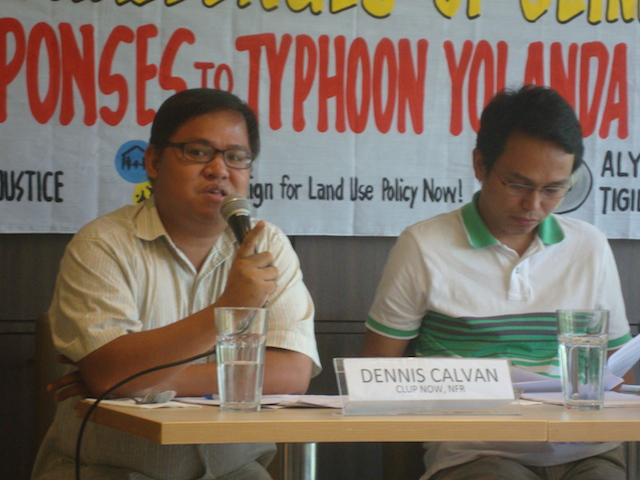By KIERSNERR GERWIN TACADENA
SIX months after Typhoon Yolanda displaced them from their homes on the shores of Sicogon Island in Iloilo province, residents there are being pushed away yet again, this time by big business.
Leaders of a nongovernment organization said real estate giant Ayala Corporation is working in partnership with the Sicogon Investors Development Corporation (SIDECO) to develop the coast of Sicogon Island for tourism.

Dennis Calvan, executive director of the Non-government Organization for Fisheries Reform (NFR), said Ayala and SIDECO are violating the Philippine Fisheries Code by offering the fisher folk a resettlement area in Carles town, a public forest area deep in the island.
Section 108 of the Philippine Fisheries Code says the establishment of fisher folk settlement areas should be near the fishing grounds where people get their livelihood, Calvan said.
In a forum organized by the Philippine Movement for Climate Justice, Calvan said the local government is prohibiting residents from rebuilding their shelters and livelihood along the shores of Sicogon, and are being pushed to the resettlement site inland.
NFR, a coalition of NGOs working for fisheries policy reform, is also pushing for the review of Ayala and SIDECO’s permit to develop the land.
“The issuance of permit to operate was questionable because it did not have any environmental impact assessment, which is a requirement if you will develop an area as tourist destination,” Calvan said.
VERA Files tried to get Ayala’s side but its representative was unavailable for comment.
The government has already prohibited construction in typhoon areas, with President Aquino’s no-building policy announced last December. Secretary Panfilo Lacson, whom Aquino appointed as Presidential Assistant for Rehabilitation and Recovery (OPARR), changed the policy and declared typhoon-hit areas a no-dwelling zone early this year.
The policy states that residents are not allowed to rebuild settlements within 40-meters from the highest mark of the tide along coastlines.
“There are a lot of accommodations already because of the frequent change in policy,” Calvan said. “One consideration is tourism, to accommodate beach resort owners and tourism industries.”
Calvan added Yolanda-stricken coastal communities, like the coastal dwellers in Sicogon, would be most affected by the policy.
According to the National Anti-Poverty Commission, 3.4 million families in areas hit by Yolanda would be affected by the policy. Some 890,000 of them will be displaced.
Meanwhile, Calvan said one problem with implementing the policy is the lack of provisions on how to deal with existing property within the restricted no-build zones.
“Using the National Statistics Office data in 2010, 252,000 fishing families without tenurial security would be affected once the policy is implemented,” he said.
The government has not issued guidelines for the implementation of the policy, and yet, it is already being carried out in local government units, Calvan said.
“Even with the absence of national guidelines, the local government units already implement the policy, prohibiting fishermen to go back to their shelters,” Calvan said.
In Tacloban, for instance, some municipalities already implement the policy through ordinances.
Calvan said early this year, the NFR also came up with a set of principles on the no-dwelling policy to help the government with the formulation of national guidelines.
OPARR is set to release the guidelines this month.
(The author is a University of the Philippines students writing for VERA Files as part of his internship.)
